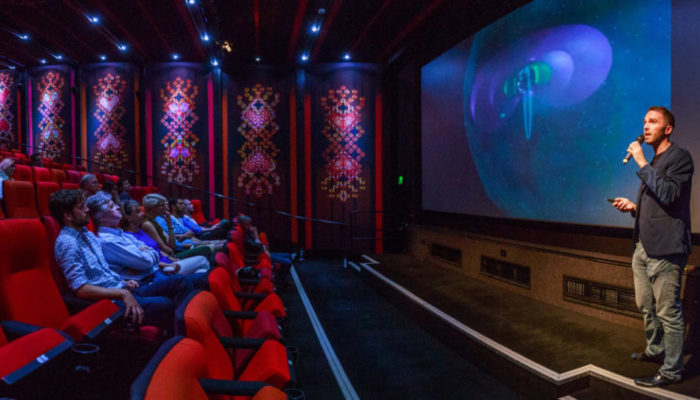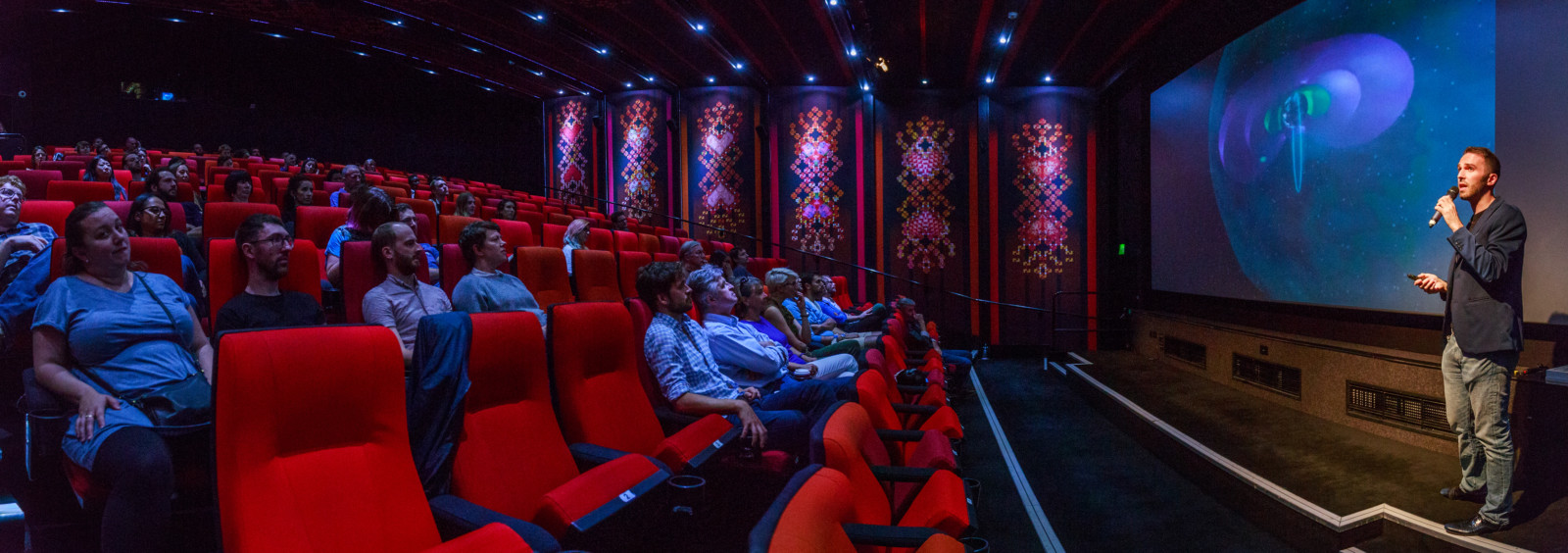
One of the major motivations behind research into solar-terrestrial physics is the potential consequences of space weather on our technologically dependent society. Given this risk, recognised by many governments around the world, it is a little concerning that a sizable fraction of the public have never even heard of the term “space weather” – for example a recent public dialogue in the UK showed 48% of the adult population reported this. It is therefore important that we reach out to the public more to instil the value of our research. However, we also need to recognise that typical approaches to public engagement, such as lectures, necessarily tend to attract those already highly interested in science (the “scientific echo chamber”) and so a variety of different forms of engagement appropriate for a diverse range of audiences are required.
One of the problems our field faces is that the vast majority of the solar-terrestrial interaction is invisible, with the obvious exceptions being the Sun and the aurorae. So when we want to engage people with our specific research, we often don’t have visually arresting imagery to rely upon like say in many areas of astronomy or geoscience. Indeed, much of our data come in the form of time-series recorded by satellites that we either inspect visually or using standard computational techniques. However, time series lend themselves naturally to another of our senses – sound. My research concerns ultralow frequency waves, which by their very name implies we could never hear them, however simply by dramatically speeding up their playback we can make these waves audible. Here’s what they sound like at geostationary orbit.
I’m sure you’ll agree with me… they’re pretty weird. Listening to the data though got me thinking about how these sounds could be used creatively in film, thereby providing a possible different lens through which to engage public audiences outside the “echo chamber”. This inspiration became the SSFX (Space Sound Effects) Short Film Festival and led me to embark upon a journey to discover the processes and networks that already exist within the film festival world.
By partnering with networks and organisations in the film industry, we put out a public call challenging independent filmmakers to produce short films which incorporated these sounds in creative ways. The brief was deliberately left very open to elicit a wide range of responses, not simply films trying to communicate science. We were able to attract a real variety of submissions from filmmakers around the world, with seven selected for screening at our festival held at a boutique cinema in London.
Following this first event, we supported the selected filmmakers in submitting their works to established film festivals and exhibitors, infiltrating over 800 events across 8 countries. Through evaluation of these events, it was found that these events attracted diverse audiences who typically don’t attend science events and were more unaware of the underlying science than the general population. We therefore were able to expose these audiences to solar-terrestrial research in a way which appealed to them. Several unanticipated outcomes arose from their attendance also, such as attendees reflecting on how we hear things different, finding aspects of humanity in the works, and ultimately coming to value the importance of curiosity-driven research. The films are now available online for free in the form of a feature length anthology if you want to check them out.
As a space physicist, I am not an expert in the film industry and how it works. I have learnt a huge amount about it though by running this project and it has exposed me to genres of film and perspectives I never would have encountered otherwise. This learning and evaluation has been distilled into a paper that was recently published in Geoscience Communication, which you can read to learn more about the project. Keep your eyes peeled to this blog though, as I’ll also be writing some top tips on how to go about art-science collaborations for public engagement soon too.

